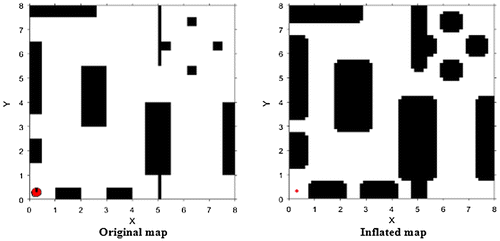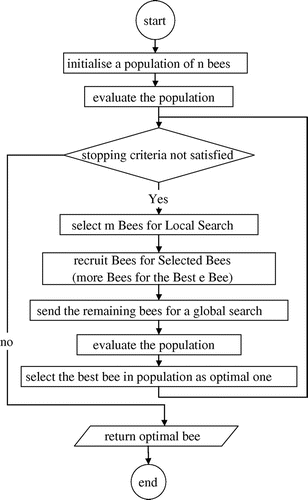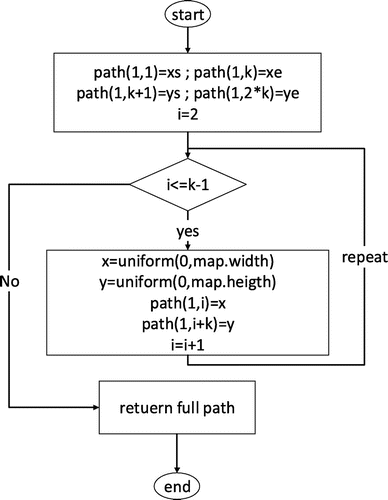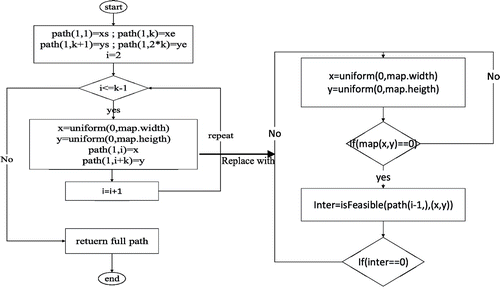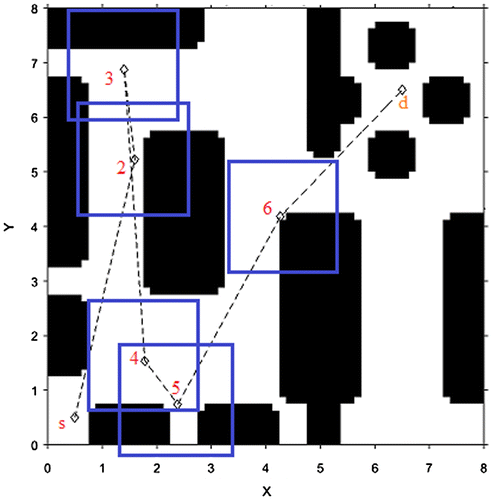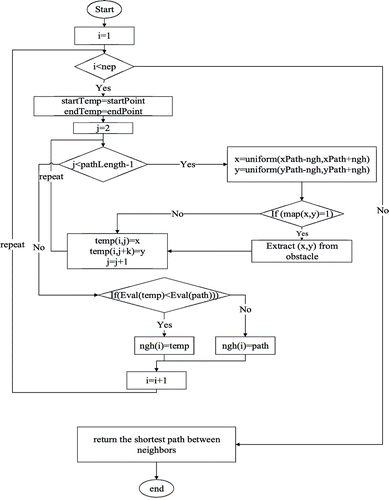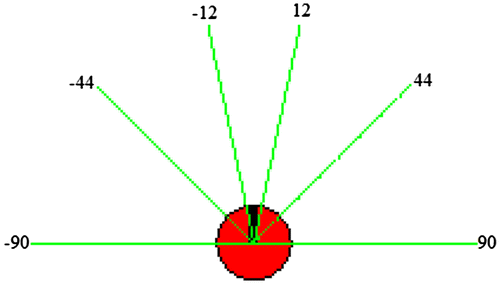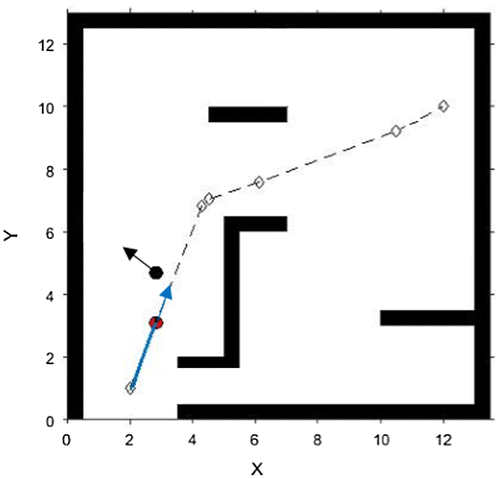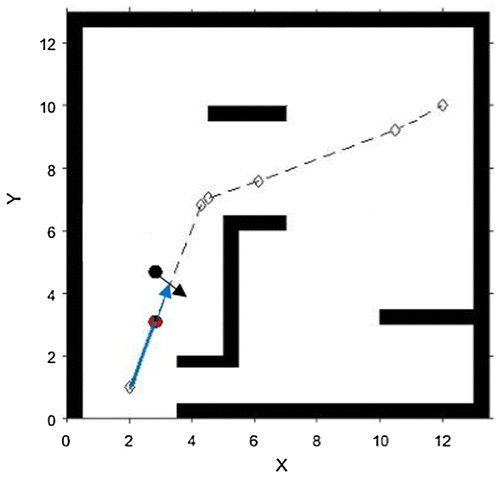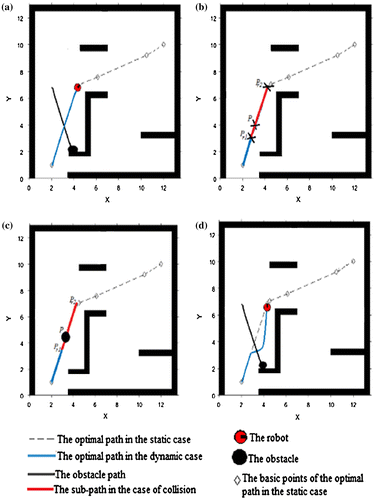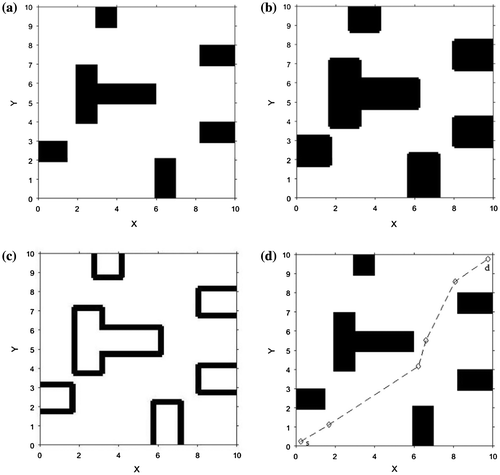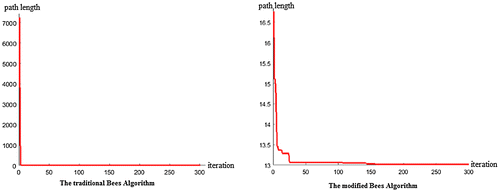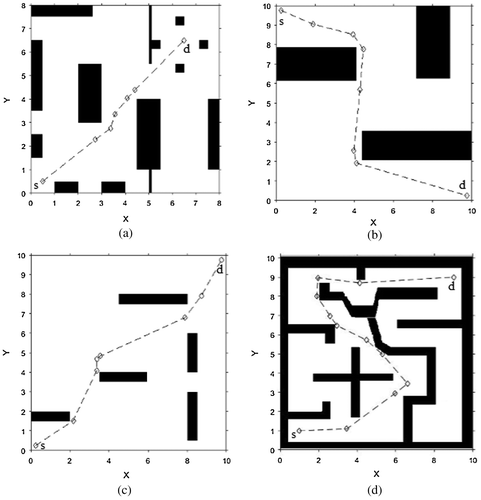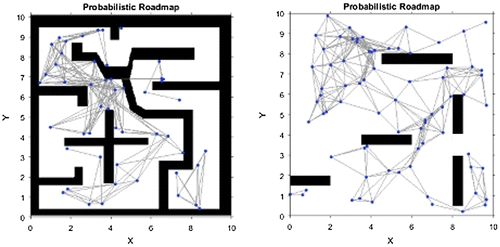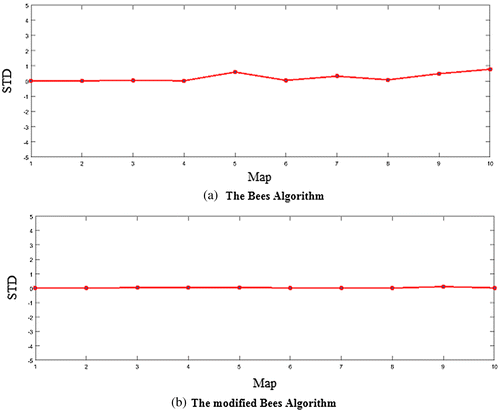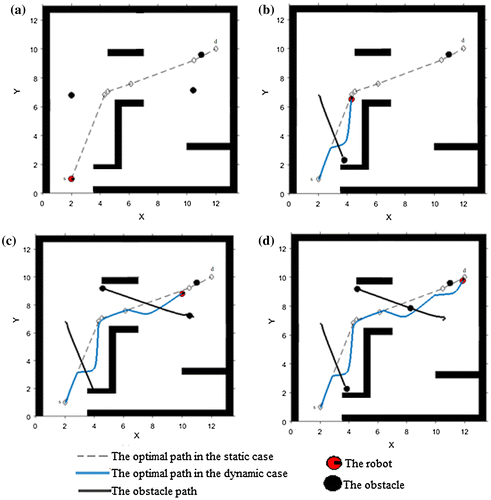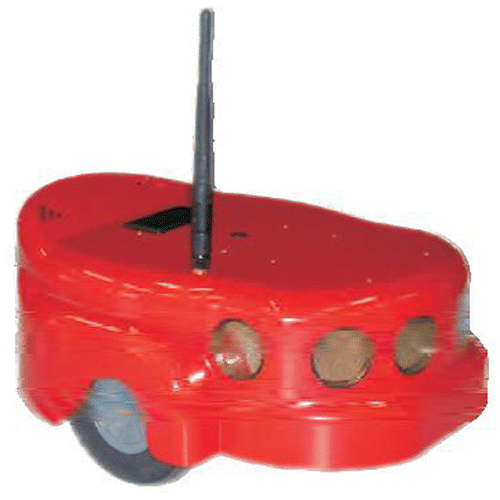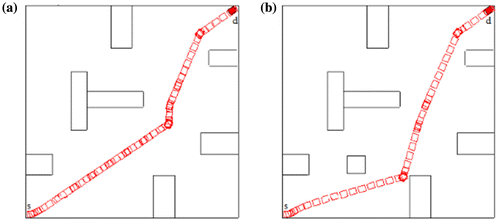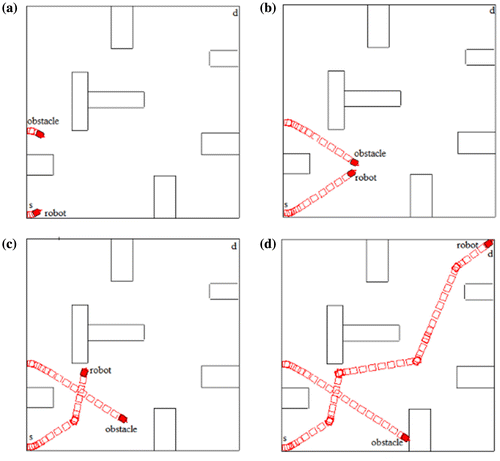Cogent Engineering
Volume 5, 2018 - Issue 1
Open access
2,807
Views
18
CrossRef citations to date
0
Altmetric
Research Article
Using the Bees Algorithm for wheeled mobile robot path planning in an indoor dynamic environment
Ahmed Haj Darwish
Faculty of Informatics Engineering, Department of Artificial Intelligence and Natural Languages, University of Aleppo
, Aleppo, SyriaCorrespondence[email protected]
 https://orcid.org/0000-0001-6471-852XView further author information
https://orcid.org/0000-0001-6471-852XView further author information
Abdulkader Joukhadar
Faculty of Electrical and Electronic Engineering, Department of Mechatronics Engineering, University of Aleppo
, Aleppo, SyriaView further author information
& Mariam Kashkash
Faculty of Informatics Engineering, Department of Artificial Intelligence and Natural Languages, University of Aleppo
, Aleppo, SyriaView further author information
| James Lam
University of Hong Kong
, Hong Kong
(Reviewing Editor)
Article: 1426539
|
Received 28 Sep 2017, Accepted 08 Jan 2018, Published online: 25 Jan 2018
Related Research Data
Dynamic path planning of mobile robots with improved genetic algorithm
Source:
Elsevier BV
Planning Algorithms: Introductory Material
Source:
Cambridge University Press
Training ANFIS Using the Enhanced Bees Algorithm and Least Squares Estimation
Source:
Computers, Materials and Continua (Tech Science Press)
Proposal of a Harmonic Bees Algorithm for Design Optimization of a Gripper Mechanism
Source:
HAL CCSD
Metaheuristic Algorithm for Robotic Path Planning
Source:
Foundation of Computer Science
Probabilistic roadmaps for path planning in high-dimensional configuration spaces
Source:
Institute of Electrical and Electronics Engineers (IEEE)
Real-time obstacle avoidance for manipulators and mobile robots
Source:
Institute of Electrical and Electronics Engineers (IEEE)
Robotic Path Planning using Genetic Algorithm in Dynamic Environment
Source:
Foundation of Computer Science
Development of User-Integrated Semi-Autonomous Lawn Mowing Systems: A Systems Engineering Perspective and Proposed Architecture
Source:
MDPI AG
An adaptive genetic algorithm for robot motion planning in 2D complex environments
Source:
Elsevier BV
An Overview of Nature-Inspired, Conventional, and Hybrid Methods of Autonomous Vehicle Path Planning
Source:
Hindawi Limited
Optimal path planning of mobile robots: A review
Source:
Academic Journals
Related research
People also read lists articles that other readers of this article have read.
Recommended articles lists articles that we recommend and is powered by our AI driven recommendation engine.
Cited by lists all citing articles based on Crossref citations.
Articles with the Crossref icon will open in a new tab.

